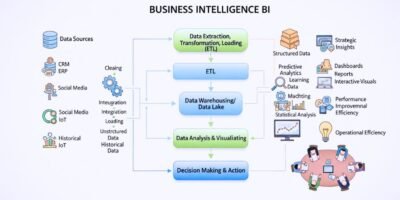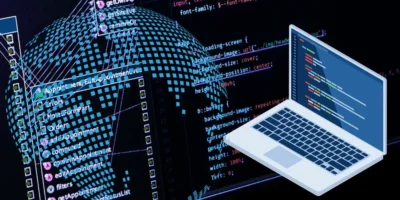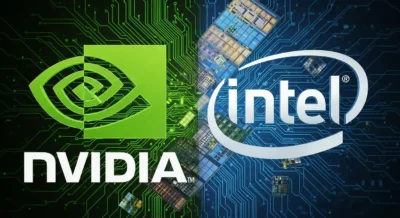From the breathtaking visual effects in blockbuster films to the immersive worlds of video games and the innovative products we use every day, 3D modeling is the invisible architecture of our modern world. The software used to sculpt these digital creations has evolved into an astonishingly powerful and accessible ecosystem.
As we look at the landscape in 2025, the best 3D modeling tools are defined by intelligent procedural workflows, powerful AI-assisted features, and real-time rendering capabilities. Whether you’re a seasoned professional, an aspiring artist, or an engineer, this guide will walk you through the top 5 3D modeling software platforms that are shaping the future of digital creation.
Autodesk Maya
For over two decades, Autodesk Maya has been the undisputed industry standard for 3D animation, character creation, and visual effects in the film and AAA game industries. It is a deep, powerful, and incredibly versatile toolset trusted by the world’s leading studios.
If your goal is to create professional, cinematic-quality character animations or breathtaking visual effects, Maya is the powerhouse you need to master.
- Industry-Standard Rigging and Animation: Offers an unmatched suite of tools for creating complex character rigs and producing nuanced, lifelike animations that are the benchmark of the industry.
- Bifrost Procedural Effects Platform: A powerful node-based environment that allows artists to create incredibly detailed and realistic visual effects, from fire and smoke to sand and snow.
- Robust Modeling Toolkit: Provides a comprehensive set of tools for creating detailed 3D models, characters, and environments using both polygon and NURBS modeling techniques.
- Extensible and Customizable: With deep support for Python and MEL scripting, studios can build custom tools and create highly specialized production pipelines to fit their exact needs.
Best For: Professional 3D character animators, visual effects artists, and large studios working on feature films, television, and high-end game cinematics.
Blender
Blender has risen from a niche open-source project to a revolutionary, all-in-one 3D creation suite that competes with—and in some areas surpasses—the most expensive software on the market. It’s a completely free, community-driven powerhouse that can handle every step of the 3D pipeline.
For independent artists, freelancers, and studios of all sizes, Blender’s staggering capabilities and lack of a price tag make it an unbelievably compelling choice.
- Completely Free and Open Source: Offers a full, professional-grade 3D pipeline with zero cost: no fees, no subscriptions, and no watermarks.
- All-in-One Powerhouse: Includes modeling, sculpting, rigging, animation, simulation, a real-time renderer (Eevee), a photorealistic renderer (Cycles), and even a video editor.
- Geometry Nodes: A game-changing procedural modeling and animation system that allows for the creation of incredibly complex, non-destructive, and easily editable assets and effects.
- Grease Pencil: A revolutionary tool that allows you to draw and animate in a 3D space, seamlessly blending traditional 2D animation workflows with the power of 3D.
Best For: Independent creators, freelance 3D artists, game developers, and anyone who wants a powerful, versatile, and completely free 3D animation suite.
Maxon ZBrush
When it comes to digital sculpting, ZBrush stands alone in its own league. It is less of a traditional 3D modeler and more of a digital clay environment, allowing artists to sculpt high-resolution organic models with an unparalleled level of detail and artistic freedom.
For character artists, creature designers, and anyone creating detailed 3D models for games, film, or 3D printing, ZBrush is an essential tool.
- Unmatched Digital Sculpting: Provides a vast and intuitive set of brushes that mimic the feel of real-world sculpting, allowing artists to shape, mold, and detail models with millions of polygons in real-time.
- Powerful Retopology Tools: Features like ZRemesher allow you to automatically create clean, production-ready, low-polygon topology from your high-resolution sculpts.
- Dynamesh and Sculptris Pro: These technologies allow you to sculpt without worrying about underlying polygon structure, giving you complete creative freedom to add or remove volume as needed.
- Polypaint: A unique feature that allows you to paint color and texture directly onto the surface of your model without needing to create UV maps first.
Best For: Character artists, creature designers, and 3D printing enthusiasts who need to create highly detailed, organic models.
Maxon Cinema 4D
Cinema 4D has earned its reputation as the king of 3D motion graphics, beloved by artists for its intuitive workflow and legendary stability. It’s the go-to application for creating abstract animations, product visualizations, and broadcast graphics.
Its seamless integration with other tools, particularly Adobe After Effects, has made it an indispensable part of the professional motion designer’s toolkit.
- The MoGraph Toolset: A revolutionary procedural modeling and animation system that makes creating complex, data-driven motion graphics incredibly fast and intuitive.
- User-Friendly and Intuitive: Widely considered to have one of the easiest-to-learn and most logical interfaces of any professional 3D application, making it a favorite for artists.
- Seamless After Effects Integration: The Cineware plugin creates a live 3D pipeline between Cinema 4D and After Effects, allowing you to render 3D scenes directly in your composite.
- Redshift Renderer Integration: Comes with Redshift, a powerful, production-proven, GPU-accelerated renderer that delivers stunning photorealistic results at high speed.
Best For: 3D motion graphics artists, broadcast designers, and advertising agencies.
Autodesk Fusion 360
Fusion 360 bridges the gap between artistic design and precision engineering. It is a cloud-based CAD/CAM/CAE tool that is purpose-built for product design, mechanical engineering, and manufacturing.
Unlike the other tools on this list, which focus on entertainment, Fusion 360 is designed for creating functional, real-world objects with absolute precision.
- Parametric Modeling: Its history-based modeling approach allows you to go back and change any dimension or feature, and the entire model will update automatically, making it perfect for iterative design.
- Integrated CAD, CAM, and Simulation: A single platform that takes you from initial concept and 3D modeling to creating toolpaths for CNC machining and simulating real-world stresses.
- Cloud-Based Collaboration: Being cloud-native, it makes it easy for teams to collaborate on the same project, manage versions, and share designs from anywhere.
- Accessible for Hobbyists and Startups: Offers a free license for personal, non-commercial use and a more affordable subscription for startups, making it highly accessible to both hobbyists and startups.
Best For: Product designers, engineers, machinists, and hobbyists who are creating objects for manufacturing or 3D printing.
Conclusion
The 3D modeling software of 2025 offers a specialized tool for every imaginable creative or technical challenge. Your ideal choice depends on your end goal. For cinematic animation, Maya is the Hollywood standard. For an all-in-one, free powerhouse, Blender is a revolution. For intricate digital sculpting, ZBrush is a master. For dazzling motion graphics, Cinema 4D is the artist’s favorite. And for designing real-world products, Fusion 360 is the engineer’s choice.
By selecting the software that aligns with your vision, you can unlock the power to build anything you can imagine, one polygon at a time.













